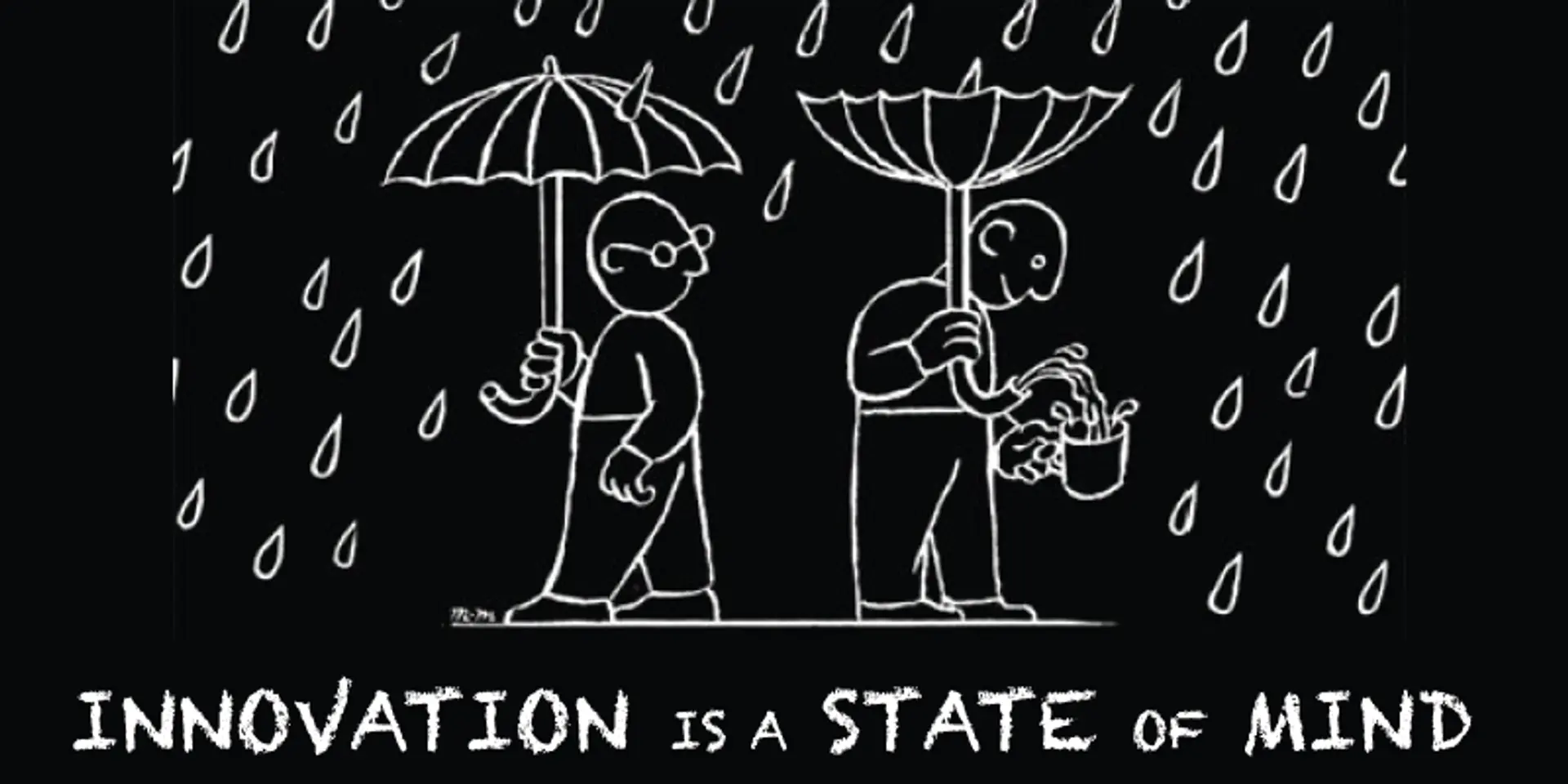‘Innovation is good business, but it can also be good life’ - creativity tips for individuals and organisations
Are innovators really very different from the rest of us – can we become like them? How do entrepreneurs succeed in spotting good ideas – and bring them to reality without growing broke? How do companies create a culture of continuous innovation?

Many of these principles are illustrated along with a range of case studies in the book Innovation is a State of Mind by Australian author and broadcaster James O’Loghlin. See also my reviews of the related books Creative Confidence (Tom and David Kelly), Originals (Adam Grant), The Innovation Formula (Amantha Imber) and Gamechangers (Peter Fisk).
James has featured hundreds of Australia's inventors and innovators in the eight years he hosted ABC-TV's programme, ‘The New Inventors’. His other books include A Complete Guide to Public Speaking and How to Balance Your Life; he is also a comedian and has written children’s books.
“Whether we like it or not, change is coming and we need to be ready. Now, more than ever before, we need to be innovative,” begins James. Innovations can be radical or incremental; each major invention is followed by a series of innovations that improve upon it, in steps and cycles that are now becoming faster and faster.
The 189-page book is divided into two parts – tips for individuals and guidelines for organisations. Here are my takeaways from the book, summarised in the two tables below; each chapter is packed with many examples and checklists.
Innovative you
Many successful innovators are good observers and note-takers. “The best way to have lots of ideas is to spend time trying to think of them,” says James. Established habits and processes should be examined and questioned to open up new avenues for innovation.
Think of new ways to extend your product features, and also how you can connect to or compliment other products and services used by your customers. Understand your customers better to anticipate emerging trends and needs in their lives. Always stay focussed on identifying and solving their current and future problems, with a sense of urgency.
“Creativity is overrated. Determination and perseverance are underrated,” says James. Innovative thoughts and acts should be an essential part of everyone’s jobs. Challenges include assessing what is right or wrong advice, or how the context changes the assessment of the advice. In the long run, fear of failure should be managed if not overcome.
“If you want to innovate, it’s important that you develop a healthy relationship with failure, because it is an inevitable part of the process of innovation,” cautions James. In the words of Denis Waitley: “Failure is delay, not defeat. It is a temporary detour, not a dead end.”
The innovation journey is one of continuous improvement. “Question everything you do and ask yourself if there might be a better way of doing it,” advises James. It is possible to get intimidated by the duration and complexity of the journey, hence stepwise approaches work best. “People often set goals that are so ambitious and far away that they seem unrealistic,” says James. “Just take the next step, and then take another one,” he adds.
Table 1: Innovative individuals
Examples include Lloyd Linson-Smith (thermostat to reduce hot water wastage), Suvir Mirchandani (US teenager who used efficient fonts to reduce weight of printed handouts), Hannah Piazza (gently rocking hospital bed to reduce bedsores), Han Van Wyc (temperature sensors to warn farmers of overheating hay bales), Lincoln Morris (placing lightbulbs above fishtanks to attract insects as food for the fish), Air Canada (in-flight entertainment app to reduce on-seat device installations), Upworthy (analysing responses to multiple headlines), EnLighten (data analytics to spot and reduce light wastage), and lubricant WD-40 (produced after 40 attempts!).
Innovative organisation
The second part of the book is targeted at business managers and leaders. As businesses get systematised, the need for everyone to be innovative diminishes as process efficiency and predictability take over; innovation is relegated to only a few roles and departments. When employees are never asked for ideas, they may not know how to suggest and test new ideas.
Managers should promote quantity as well as quality of idea flow. “Institutionalise innovation time. Make sure that time is in everyone’s diary,” James advises. Employees should be trained in effective pitching, and in getting others to collaborate.
Clear feedback should be given on un-supported, erroneous or mis-timed ideas; the composition of the assessment jury should be clearly communicated as well. Ideas which can deliver business benefits in specified time limits should be prioritised. Appropriate rewards and support should be given to successful ideas, ideators and implementers.
Table 2: Innovative organisations
Overall, innovation is a combination of smart thinking and hard work. “There are many good reasons why innovation is good business, but it can also be good life,” James effectively sums up.







